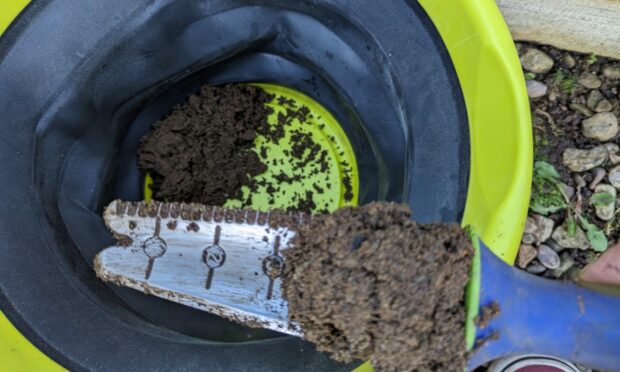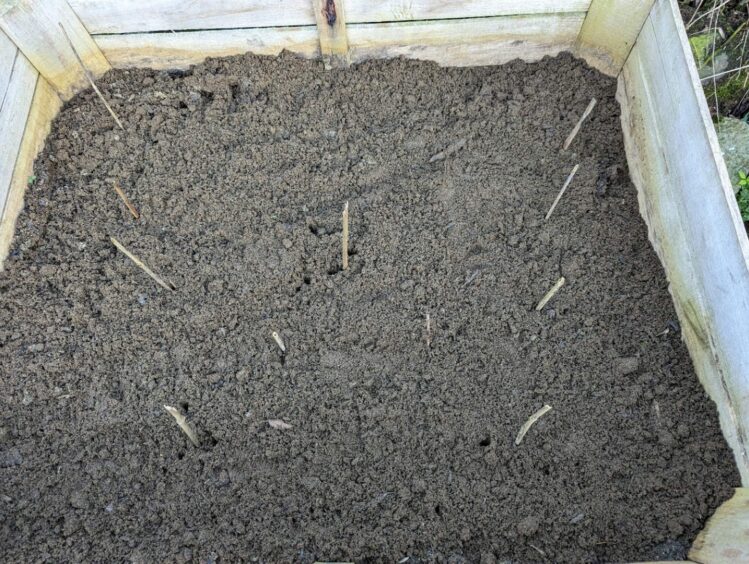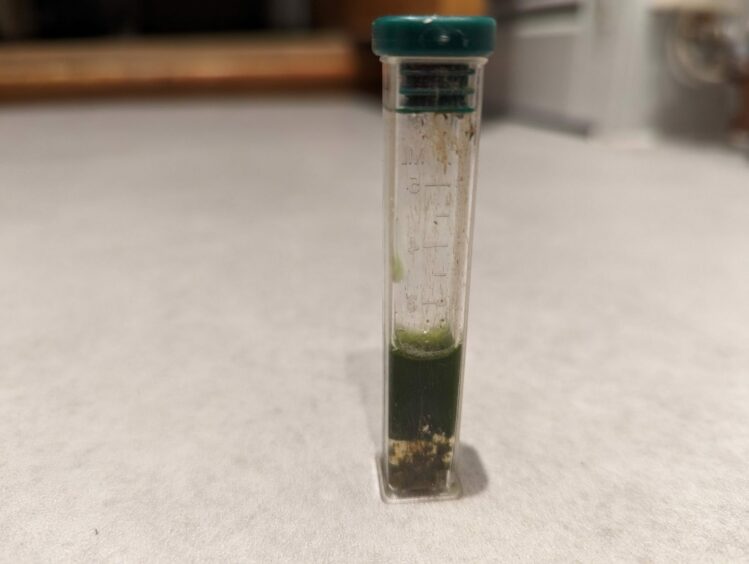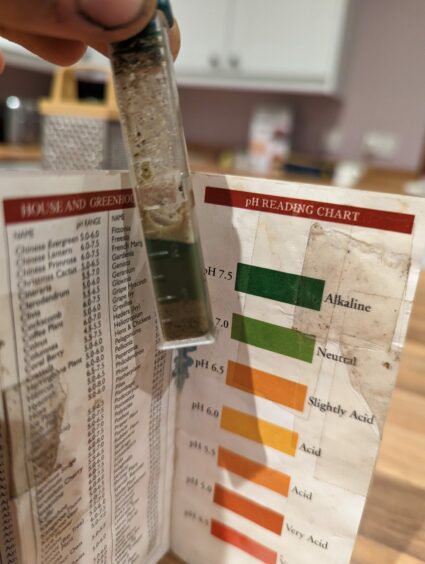Many gardeners may know that pH stands for potential Hydrogen. The pH scale denotes the acidity or alkalinity of a solution on a logarithmic scale.
The scale goes from 0 to 14 with 0 being extremely acidic, 7 being neutral and 14 being extremely alkaline.
It’s a logarithmic scale as it goes up in scale exponentially. Going up by a value of 1 is an increase tenfold.
This means a pH of 8 is 10 times more alkaline than a pH of 7.
A pH of 9 however is 100 times more alkaline than pH of 7.
An ideal garden soil pH is thought to be around 6.5, slightly acidic to neutral.
I would say that anything between 5.5 to 8.5 is generally thought to be healthy and workable.
Less or more would mean a much narrower range of plants can be grown and would likely require soil amelioration in order to raise or lower the pH.
Raising pH
Soil can have its pH raised to become more alkaline by using products like calcium in the form of lime. It’s essential to use masks, gloves and safety specs here!
Soils naturally become more acidic over time. Plants remove calcium and magnesium from the soil, slowly making it more acid.
Plants also naturally release hydrogen ions into the soil, slowly making it more acid.
Adding organic matter and rain do the same. By adding lime to a soil you neutralise the soluble acids that occur in the soil.
You also cause hydrogen ions held on soil particles to be replaced with calcium ion.
The hydrogen ions leach back out into the soil solution therefore raising the pH.
Sandy soils naturally suffer from leaching more than any other soils; this means they suffer from quickly increasing levels of acidity.
Clay and humus-rich soils retain more calcium and are therefore less acidic.
Test at home
You can test your soil pH at home with a simple test kit that you can get from any garden centre or online.
Before this, however, you need to take a soil sample.
Generally, top soil (0 to 150mm) samples are required. Sub-soil samples (450 to 600mm) are only needed if deep-rooted plants are to be planted.
Sampling a single sample of soil is unlikely to present an accurate representation of what the soil is, even in a small area.
Typically 10 to 20 samples are taken randomly to make up a single composite sample for an accurate soil representation.
A specific pattern known as the W pattern should be followed. The W pattern means taking your 10 to 20 samples leaving holes in a W shaped pattern across the site if you imagined a line joining up the dots.
An auger is used to take deeper samples. While a hand-held soil gauge may be used to take topsoil samples.
With your sample, any stones or detritus are removed. Next, the sample is dried to remove any water content.
This can be done in the oven. More simply it can be left on a heater for a few days. Once dried, it should be sieved before testing.
A sample of only around 100g will be plenty. Use a sieve or garden riddle with a 2mm grid to remove any small stones, flints, etc.
The pH kit
Soil pH test kits typically contain a pH colour scale chart. A test tube, a scooping spoon, universal indicator fluid and barium sulphate powder.
To use a kit simply put the right amount of soil into the test tube according to its type.
Sandy soil needs around 30mm worth, loam 20mm and clay soil 10mm.
Next add the barium sulphate powder to the test tube to make a combined depth of soil with the barium sulphate of 40mm.
Next, add the universal indicator to bring the solution level up to the correct mark on the tube (this will be obvious).
Now put the lid on and shake well then allow the test tube to stand undisturbed until a coloured solution above the soil can be seen. Once a colour appears after sitting for 10mins, compare the colour of the solution to the pH colour chart. The colour chart will tell you what the pH value is.
Natural signs
Plants can naturally indicate the pH of the soil below. Hydrangea macrophylla is a famous example of this.
If the flowers are blue then it indicates acidic soil. If the flowers are pink then it indicates alkaline soil.
There are other plants which give obvious signs. Rhododendrons and Azaleas all thrive in acidic soils.
These are known as ericaceous plants. Buddleia, clematis and brassicas thrive in alkaline soils.
It’s fun and easy to do a soil test. Try it!
Take care and happy gardening.





Conversation